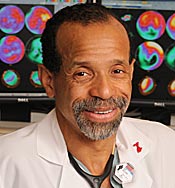Increased Medicare spending for advanced imaging procedures under scrutiny
The comparatively rapid increase in spending on advanced imaging modalities, such as nuclear medicine, under Medicare Part B has warranted scrutiny, according to a government report.
The report, issued by the Government Accountability Office, focused on increased spending under Medicare Part B for various imaging services between 2000 and 2006, as well as on the shift of care and use of imaging technologies from hospitals to private physician offices.
According to statistics cited in the report, Medicare Part B spending under the physician fee schedule for imaging services more than doubled between 2000 and 2006, increasing by about $14 billion. Spending on complex modalities like CT and nuclear imaging also increased more rapidly (17%) than spending on simpler imaging modalities like X-ray or ultrasound (9%).
The report also showed that the proportion of Medicare spending on imaging services performed in-office rose from 58% to 64% between 2000 and 2006. Physician practices also derived an increasing share of revenue from in-office imaging: In 2006, cardiologists derived 36% of their total Medicare revenue from in-office imaging, compared with 23% in 2000.
|
|
“These trends raise concerns about whether Medicare’s physician payment policies embody financial incentives for physicians to overuse imaging services,” the investigators wrote. “Although some of this growth may represent appropriate increases in clinical applications of imaging to diagnose and treat diseases and medical conditions of Medicare beneficiaries, the increased provision of imaging services in physician offices also has potential implications for quality.”
The investigators recommended that the CMS “extend its payment safeguard mechanisms by adding more front-end approaches to managing imaging services, such as privileging and prior authorization.”
Kim A. Williams, MD, professor of medicine and radiology at the University of Chicago, told Cardiology Today that the larger picture is more complicated than the report suggests.
“The patients who are likely to suffer cardiac illness and the physicians who were providing care were not represented,” Williams, also a member of the Cardiology Today Editorial Board, said. “If they had talked to patients and to the physicians, they would have found that we have experienced a dramatic improvement in our ability to diagnose heart disease, which has resulted in a dramatic reduction in cardiac mortality during the past 10 years.”
Williams questioned aspects of the report, including the implication that financial incentives offered by Medicare reimbursement for imaging were responsible for its increased usage. He instead attributed the growth in part to a natural process of technological saturation, by which offices take years to gradually equip themselves with the certain technologies as practice and technological standards evolve.
“The report seemed to suggest that the increased growth was being driven by increased revenue and that declining reimbursement in other areas was pushing people toward imaging to make money,” Williams said. “That assumes a level of cynicism that is really unacceptable, and most physicians I know would spend their last personal dime to take care of a patient. To say that this is primarily financially motivated is basically an insult to physicians and the patients they take care of.”
Although Williams agreed that increasing costs to Medicare are cause for concern, he emphasized that there are issues in addition to financial considerations that need to be included in any complete analysis of the problems facing the system.
“It is very expensive, but the alternative to early diagnosis is death for many patients, and the report does not seem to recognize that there are huge benefits to medical imaging,” Williams said. – by Eric Raible
For more information:
- US Government Accountability Office. Medicare Part B imaging services: Rapid spending growth and shift to physician offices indicate need for CMS to consider additional management practices. GAO-08-452.

![]()
Nuclear cardiology has undergone huge growth, attracting attention from regulators who wish to control costs. We believe nuclear cardiac imaging is a valuable service to our patients and has helped us to better manage cases and to reduce the death rate from heart attacks. The ACC, the American Society of Nuclear Cardiology and other professional organizations have vigorously supported physician-centered appropriateness criteria and lab accreditation as means of making sure high quality imaging is available to patients who need it. Of course, financial motivation is part of the picture, particularly because the costs of running an office have risen and revenue from other services we provide has fallen. However, this GAO report appears to single out nuclear cardiology — not echocardiogram, CT, MRI or other services — for across the board punishment. Restricting access to convenient in-office imaging will result in more expensive testing done in the hospital and may not save the money GAO intends, and could harm patient care.
– Samuel L. Wann, MD
Cardiology Today Section Editor

